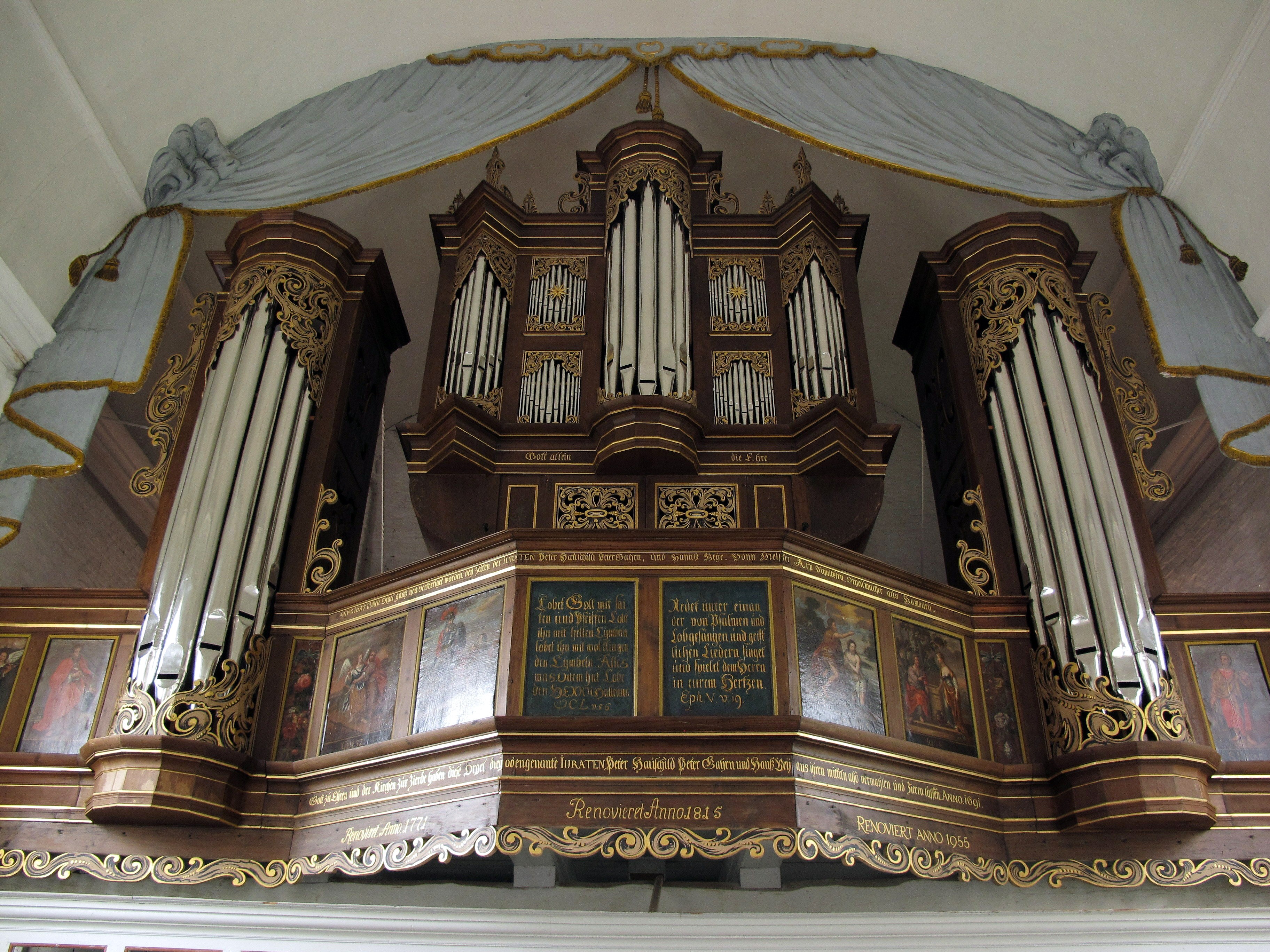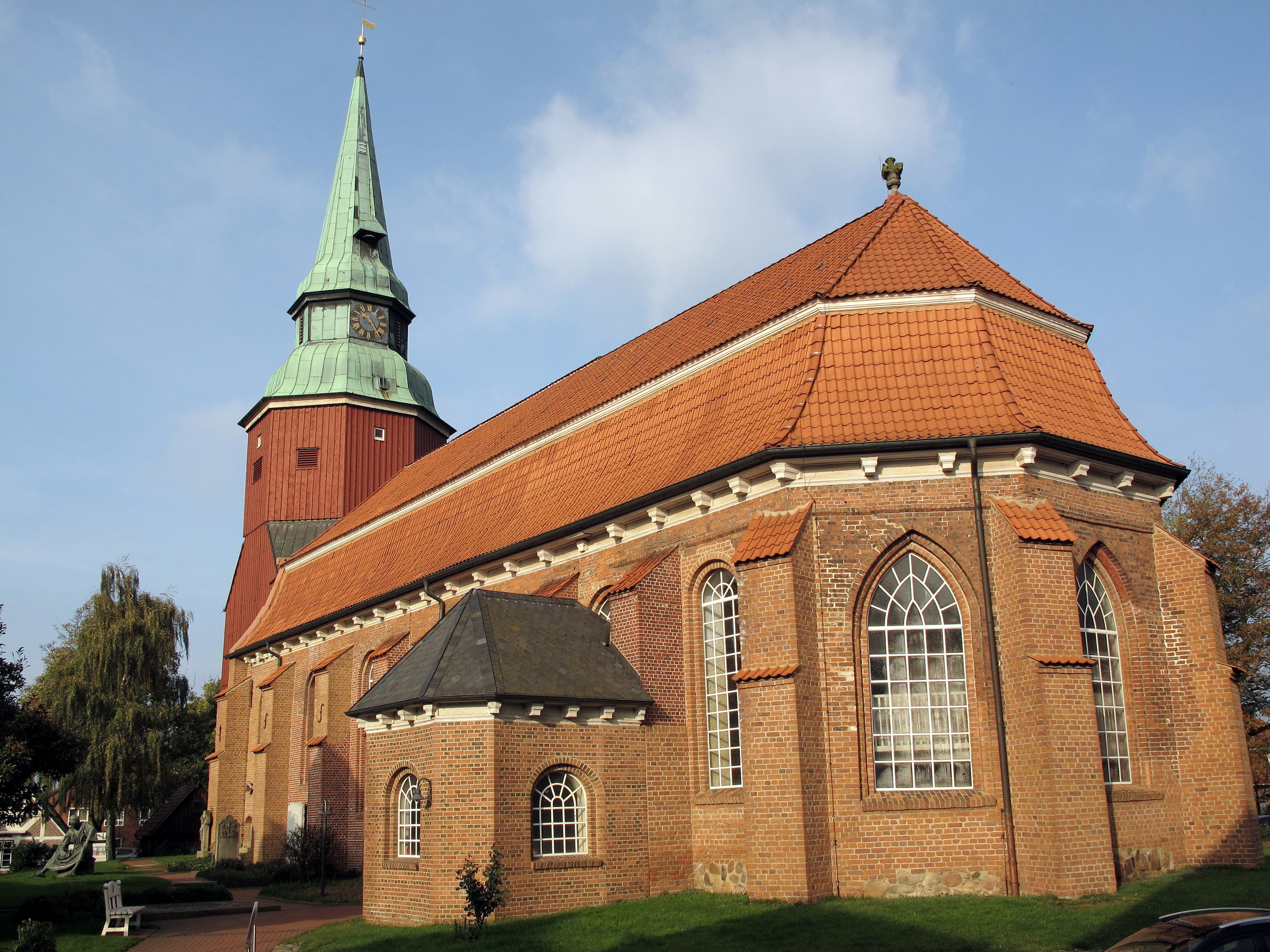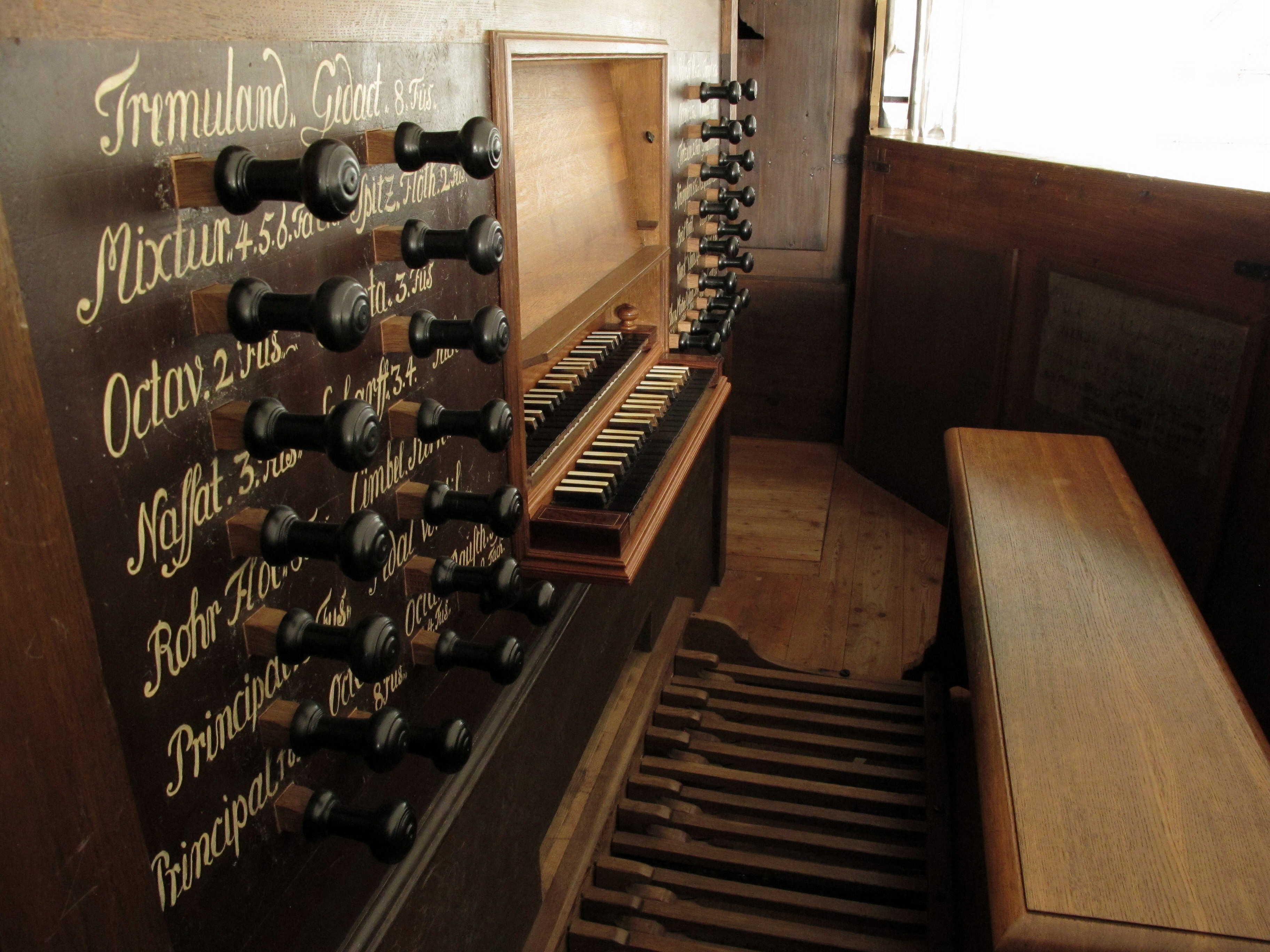Steinkirchen, Kirche St. Martini et Nicolai
| Builder | A. Schnitger |
|---|---|
| Year | ca. 1687 |
| Period/Style | Baroque |
| Stops | 28 |
| Keyboards | 2+P |
| Keyaction | tracker/mechanical |
| Tuning | Werckmeister III at 483 Hz |
| Sampleset |
Available
 , sampled by
OrganArt Media
, sampled by
OrganArt Media
|
In 1685, Arp Schnitger was commissioned to build a new organ on the west gallery, which he completed in 1687. This instrument included a Hauptwerk, Brustwerk, and Pedalwork in side towers, incorporating six registers from the 16th century. The organ, consisting of 28 registers, is known for its beautiful sound quality and polyphonic characteristics, with a remarkable ability to blend the principals, reeds, and flutes, producing a rich sound even with few stops. The organ retains a high proportion of its original pipes with unchanged intonation, and during restoration, a mild well-tempered tuning from 1775 was identified, likely set by Georg Wilhelm Wilhelmy.
In the 1950s, the Schnitger organ gained global recognition through recordings and was carefully repaired by the organ builder von Beckerath. It became a focal point for renewed interest in historical organs and their restoration. The instrument is now considered one of the most authentic Arp Schnitger organs, especially after its successful restoration by Rowan West in 2012, maintaining its original location.
The history of the organ dates back to the early 16th century, with an unknown builder creating a small organ near the altar, parts of which remain in the Hauptwerk. In 1581, Dirck Hoyer expanded this organ with a second manual. Schnitger's 1687 organ incorporated elements from both the original 16th-century organ and Hoyer's expansion. Subsequent modifications were made in 1775 by Wilhelmy, who replaced some stops and repaired the organ.
Throughout the 19th and 20th centuries, the organ underwent further repairs and restorations by various builders, including significant work by Beckerath in the late 1940s and again in the 1980s and 1990s. The most recent stabilization and restoration by Rowan West addressed previous issues and replaced non-original pipes, preserving the instrument's historical integrity. The organ is currently tuned to a Werckmeister temperament, requiring minimal alterations to the original pipes.
In the 1950s, the Schnitger organ gained global recognition through recordings and was carefully repaired by the organ builder von Beckerath. It became a focal point for renewed interest in historical organs and their restoration. The instrument is now considered one of the most authentic Arp Schnitger organs, especially after its successful restoration by Rowan West in 2012, maintaining its original location.
The history of the organ dates back to the early 16th century, with an unknown builder creating a small organ near the altar, parts of which remain in the Hauptwerk. In 1581, Dirck Hoyer expanded this organ with a second manual. Schnitger's 1687 organ incorporated elements from both the original 16th-century organ and Hoyer's expansion. Subsequent modifications were made in 1775 by Wilhelmy, who replaced some stops and repaired the organ.
Throughout the 19th and 20th centuries, the organ underwent further repairs and restorations by various builders, including significant work by Beckerath in the late 1940s and again in the 1980s and 1990s. The most recent stabilization and restoration by Rowan West addressed previous issues and replaced non-original pipes, preserving the instrument's historical integrity. The organ is currently tuned to a Werckmeister temperament, requiring minimal alterations to the original pipes.
| Hauptwerk | Brustwerk | Pedal |
|---|---|---|
| Quintadena 16 | Gedact 8 | Principal 16 |
| Principal 8 | Rohr Flöth 4 | Octav 8 |
| Rohr Flöt 8 | Quinta 3 | Octav 4 |
| Octav 4 | Octav 2 | Nachthorn 2 |
| Nassat 3 | Spitz Flöth 2 | Rausch Pfeiff 2.Fach |
| Octav 2 | Tertzian 2.Fach | Mixtur 4.5.Fach |
| Gemshorn 2 | Scharff 3.4.Fach | Posaun 16 |
| SexQuialter 2.Fach | Krumphorn 8 | Trompet 8 |
| Mixtur 4.5.6.Fach | Cornet 2 | |
| Cimbel 3.Fach | ||
| Trompet 8 |
Sei gegrusset Jesu gutig-BWV 768
0:00
0:00
Praeludium in e BuxWV 142
0:00
0:00
Tunder Praeludium ex F
0:00
0:00
https://www.organartmedia.com/de/arp-schnitger
https://orgeldatabas.gu.se/webgoart/goart/go_pub.php?p=36&u=1&f=334&l=de§sel=detail&id_nr=5667
https://orgeldatabas.gu.se/webgoart/goart/go_pub.php?p=36&u=1&f=334&l=de§sel=detail&id_nr=5667
 Pipe Organ Map
Pipe Organ Map

